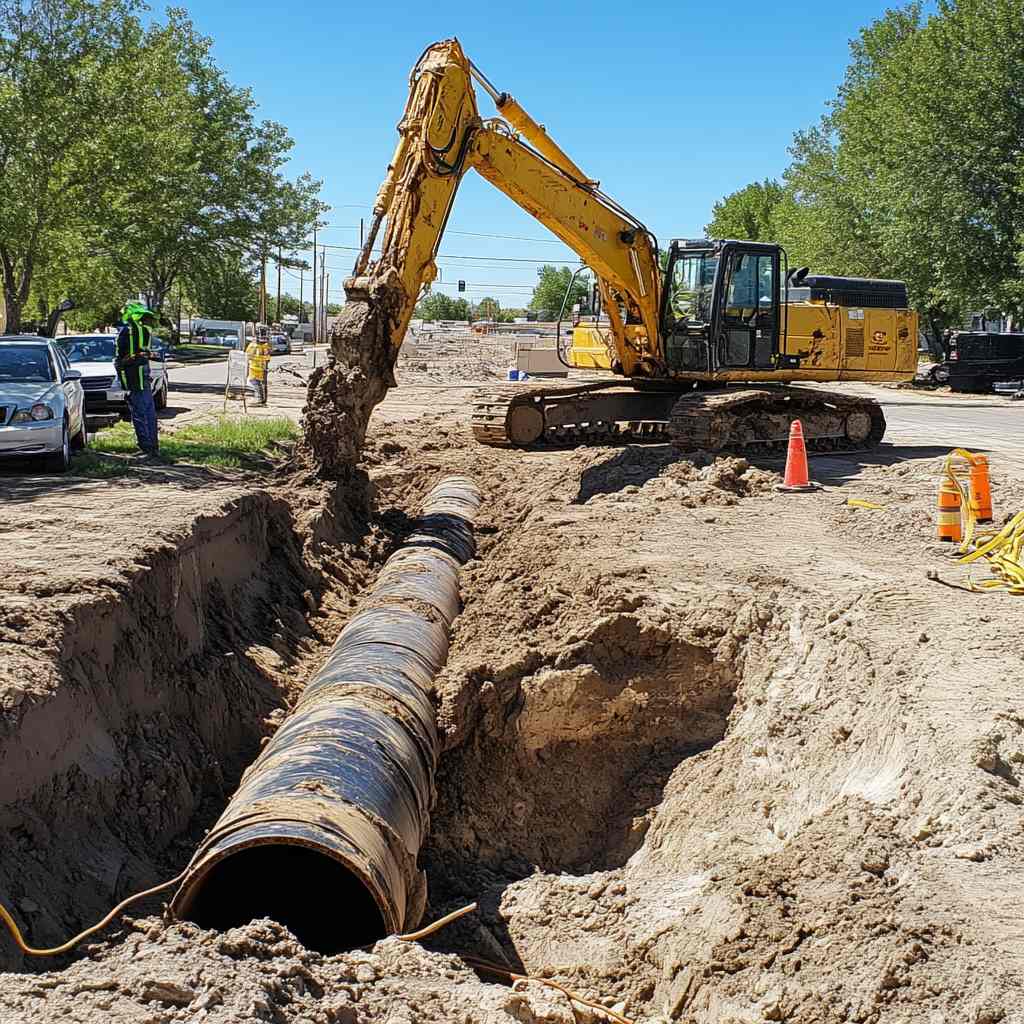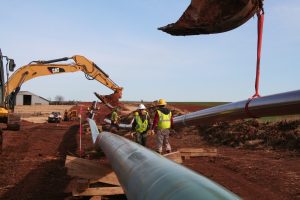Permian Basin Pipeline Construction Things To Know Before You Buy
Wiki Article
Examine This Report on Permian Basin Pipeline Construction
Table of ContentsPermian Basin Pipeline Construction Fundamentals ExplainedSome Ideas on Permian Basin Pipeline Construction You Need To KnowThe smart Trick of Permian Basin Pipeline Construction That Nobody is DiscussingGetting The Permian Basin Pipeline Construction To WorkGet This Report about Permian Basin Pipeline ConstructionPermian Basin Pipeline Construction for Dummies3 Easy Facts About Permian Basin Pipeline Construction Described
Cured-in-place pipe (CIPP) is a trenchless innovation utilized to install water, drain, and various other pipelines without requiring significant excavation or invasive excavating. The procedure begins by placing a lining right into the existing pipework, which is then filled with resin that hardens to develop a permanent pipeline within the existing pipe.At MaxLiner United States, we understand the advantages of making use of CIPP, which include its affordability, speed, and marginal disruption during installment. This makes it a perfect selection for professionals, plumbing professionals, companies, and municipalities aiming to reduce downtime while installing new pipes. One of the primary benefits of CIPP is its cost savings on labor and devices, leading to a much more cost-efficient option than standard pipeline substitute approaches.

Instead, a lining is placed into the damaged pipeline and treated in position with warm, creating a smooth fixing that provides long-lasting security against origin infiltration, corrosion, opening damages, and various other usual problems with existing pipelines. Not only does this method remove the requirement for extensive digging, yet it likewise gets rid of the potential risks connected with contaminated materials removal.
All About Permian Basin Pipeline Construction
Thus, expenses have a tendency to be less than changing whole lengths of piping via open-cut installments even when factoring in the expense of liner materials. As a result of its reduced environmental effect and price savings prospective, cured-in-place pipe installation is becoming progressively popular as an option to standard repair service job in different sectors.When it involves cured-in-place pipe (CIPP) installation, several advantages stem from its marginal time and expense. CIPP installments can be set up in a portion of the time it would certainly take for standard pipeline substitute since no excavation is called for. Instead of excavating right into the bordering soil and eliminating existing pipelines, CIPP makes use of cutting edge trenchless modern technology to install material liners or polyester fiber tubes inside existing pipes
The Definitive Guide for Permian Basin Pipeline Construction
This assists to lessen downtime and maintain your project on track, leading to time savings that would certainly not have actually been possible with standard pipe replacement systems. Whether getting rid of smaller sections of piping or carrying out complete relining projects, this approach has certain advantages when it pertains to cost. Not only is tools rental eliminated since no excavation is required, however so are website reconstruction costs given that a minimal surface repair service might be needed after installation.With minimal time and price needed for setup, cured-in-place pipeline installment is a fantastic choice for cutting down on labor costs without sacrificing high quality job. As we'll talk about in the adhering to section, this kind of installation supplies substantial advantages when it involves lessening interruption around homes and companies.
All about Permian Basin Pipeline Construction
This trenchless installation is much easier to carry out than traditional pipe laying. As the name indicates, a lot of excavation and related website prep work is avoided because the new pipelines are fed through existing channels. This makes it possible to set up underground pipelines in a portion of the moment needed for the much more standard excavating approach, which can produce unnecessary disruption to the environment, regional roads, paths, surrounding homeowner, etc.Sometimes, it may take a little bit of digging if these access points are not currently installed in existing upkeep holes or catch containers. The outcome needs to still be less turbulent than digging deep into lengthy trenches, but something to consider prior to dedicating to this setup (Permian Basin Pipeline Construction). Overall, cured-in-place pipe installment is viable when minimal disruption is wanted given that many of the underground infrastructure stays undamaged while supplying renewed toughness and dependability to existing pipes


The cured-in-place installation process begins with evaluating the pipeline concerned to establish whether any kind of damages is present or needs substitute. Afterward, if needed, cleansing must take area inside the pipeline to make sure that all product build-up is gotten rid of and all surface areas are smooth and unpolluted before lining installment. When these steps are finished, an unique resin-coated felt or hybrid really felt and fiberglass textile is inserted into the pipe and go to the website uniformly dispersed along its size.
Permian Basin Pipeline Construction Can Be Fun For Everyone
Healing (either ambient, warmed water or air, or UV) is introduced right into the tube when the lining installation is complete, curing and forming the material material around the old pipe's form. It needs to be noted that too much pressure needs to be prevented in any way expenses because it can cause more damages to the system.This comprehensive area concerning the 'Cured-In-Place Setup Process' has actually explained its detailed procedure. By comprehending what enters into this process and its difficulties, we can appreciate exactly how valuable it can be for many piping fixings - Permian Basin Pipeline Construction. Now allow us go on to explore what types of materials are utilized in this process in our next section
Unknown Facts About Permian Basin Pipeline Construction
The appropriate material can significantly affect the work, including cost-effectiveness, toughness, performance, and efficiency. Polymer liners are typically favored for CIPP since they are very sturdy and immune to rust and damage. They can also last anywhere from 10 to thirty years, depending upon the quality of the products made use of.It discover this is usually much easier, much less turbulent, and much more affordable than conventional fixings. Among the major advantages of CIPP pipeline installation contrasted to the traditional technique of removing and changing any type of damaged pipeline areas with new product is that CIPP pipeline does not require digging or digging deep into the surrounding locations.
This minimizes the moment and labor required for complicated restoration tasks. Ultimately, CIPP products are thinner than sections of the new pipeline, so they call for extremely little area while using remarkable longevity and durability compared to other techniques of fixing broken pipelines. While CIPP installation uses some distinctive benefits over traditional methods of fixing pipes, it can have specific constraints depending on which kind of particular situation requires it.
The Definitive Guide to Permian Basin Pipeline Construction
On the whole, CIPP pipe installment presents numerous benefits when it concerns conserving time, money, and effort during pipeline repair tasks. These advantages make it an eye-catching choice for those read seeking quickly yet reliable methods to attend to broken pipelines in your home or in service settings. In the adhering to section, we will certainly review an overview of cured-in-place pipe setup in higher detail to offer you an even much better understanding of its many advantages.Report this wiki page